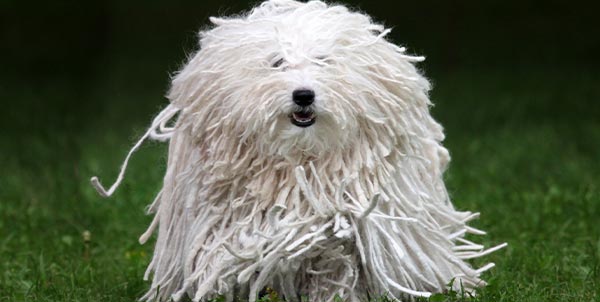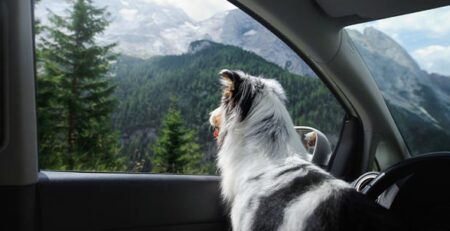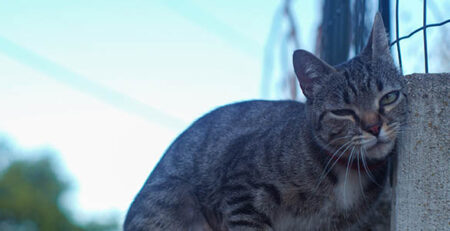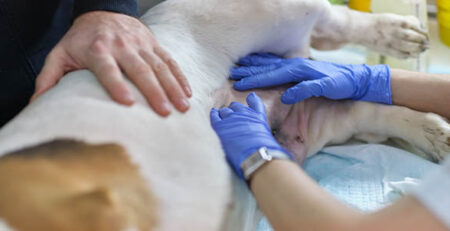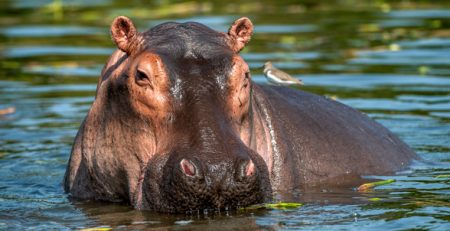Table of Contents
Dog shearing in summer: yes or no? Absolutely NO!
Shearing the dog in summer is an unnecessary and harmful practice because in reality the coat is the most valuable ally the four-legged animal has to protect itself from the heat.
Shearing does not help the dog stay cooler, far from it.
This is a commonplace rooted in a lack of knowledge of the dog’s thermoregulatory mechanisms.
The thermoregulation of the dog
Humans dissipate heat through sweating, but in dogs this mechanism does not occur: dogs do NOT sweat.
This is because the dog’s only sweat glands are located on the plantar and palmar pads and fingertips.
So, evaporation of sweat from the pads manages to cool the circulation only at the level of the paws while the rest of the body is unable to benefit.
These glands have a minimal thermoregulatory function, which is absolutely insufficient to remove excess heat.
How does the dog regulate its own body temperature?
The dog breathes through the nose.
The inhaled air, in contact with moist mucous membranes, cools and in turn cools the blood circulating in the blood vessels of the nose, consequently lowering the temperature of the entire bloodstream.
If the outside temperature, however, rises to excessively warm levels, the dog no longer eliminates air through the nose, but does so through the mouth, panting.
A dog panting with its tongue hanging out is only getting rid of excess heat
The air entering the mouth flows over the moist surface of the tongue and, through an evaporation mechanism, cools, quickly lowering the temperature of the bloodstream and thus, the systemic temperature.
But the other tool with which Mother Nature has endowed the dog to protect itself from the heat is precisely its fur with a heat-insulating function.
The heat-insulating function of the dog’s coat
The coat is a real shield: it traps external heat in the same way it does in winter with cold, preventing it from reaching the skin.
In addition, The hair also has a waterproofing function.
So, shearing the dog compromises the heat-insulating function of the coat, robbing the four-legged animal of its best protection from outside temperatures, whether high or low.
This is why dogs’ coats change and adapt to the seasons and relative temperatures through the
shedding
.
But what exactly does the dog’s coat look like?
The dog’s coat consists of two types of covering.
– the hair: longer and tougher, located at the outermost part, shields the epidermis by protecting it from sunlight and parasites.
– the undercoat: soft, woolly and much shorter than the outer coat, it has the function of retaining heat and protecting against the cold. The undercoat increases in winter or cold weather conditions and falls off in summer.
Dogs’ skin is extremely delicate as it lacks keratin: “wild” shearing exposes their epidermis to tremendous sunburn, insect bites and dermatitis.
Dog shearing is permissible only in extreme cases and should be done judiciously by an experienced groomer.
An experienced, serious and competent groomer is the one who recommends thinning the hair and refuses to shear it unless strictly necessary and only for sanitary reasons.
The exceptional cases in which it is permissible to shear (but never skin!) a dog
There are exceptions, either because of belonging to a specific breed or for sanitary reasons, that make it necessary to shear the dog’s hair.
One of these is the presence of
parasites
on the dog’s coat, for example.
Or there are some breeds of dogs, such as curly-haired dogs (see the Poodle or Bichon) whose hair is continuously growing and needs to be trimmed periodically to prevent the formation of knots and tangles that are impossible to untangle.
Instead, in long-haired dogs that are not regularly brushed, felted skeins form that are impossible to unravel and attract dirt, parasites, and bores.
Your dog’s health also comes through the routine care of his coat
To keep both the dog’s skin and coat strong and healthy, regular brushing of the coat is important, but diet also plays a key role.
A balanced diet of high-quality nutrients also affects the vitality of the dog’s coat.
When the hair appears dull, shaggy, thinning or patchy, it is likely that the dog has nutritional deficiencies.
In such cases, it is wise not to underestimate such symptoms: always consult your trusted veterinarian to ascertain the true nature of the malaise and then act accordingly in an appropriate and effective manner.
At La Veterinaria Clinic, our staff physicians are always available for visits and consultations.
We would also like to remind you that in case of need and urgency, Clinica le Veterinaria is always open h24 every day including holidays and with First Aid service from 8 pm to 8 am.

